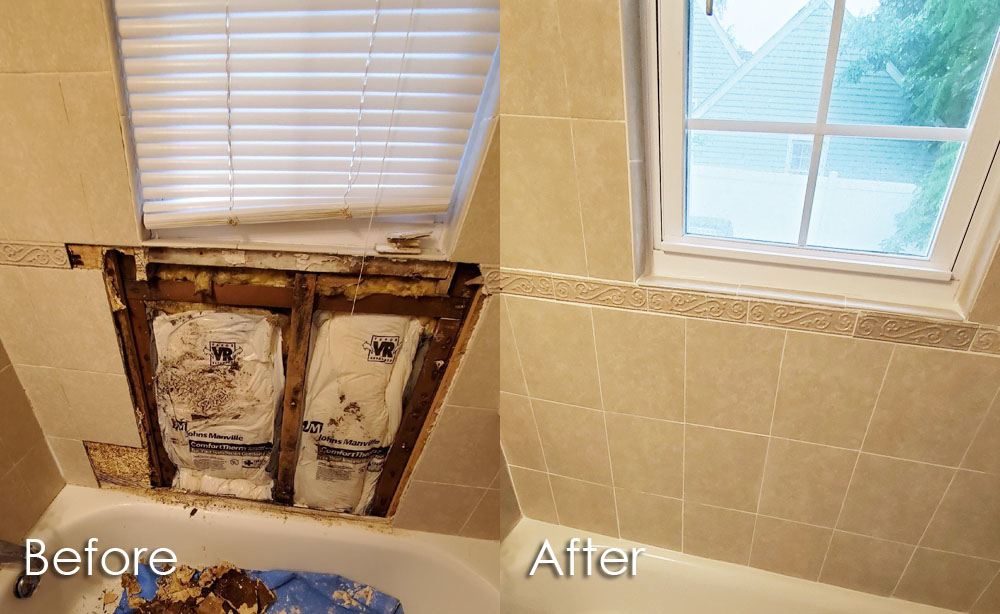Are you trying to find information concerning How to Prevent Bathroom Water Damage?

The shower room is incredibly vulnerable for wet buildup as well as potential water damages as a result of the constant use water in it. This short article provides easy inspection techniques to aid identifying water damages risks.
The frequent use of water in the washroom makes it very vulnerable for moist buildup as well as prospective water damage. By inspecting it consistently, you can minimize water associated damages.
The adhering to set of inspections is very easy to do and need to be done when in every three months in order to keep your shower room in good shape and also to avoid prospective water damages brought on by the tub, the shower, pipeline joints as well as plumbing, sinks, cabinets, and also the bathroom
Do not neglect executing these evaluations and also be complete while performing them. Remember that these easy assessments can save you a great deal of money by giving early signs for water damage
Bathtub as well as Shower
The shower and bath tub require unique interest and also maintenance. Inspect the tiles and also replace if split. Ensure that there is no missing out on grout in between the tiles. Check and change cracked caulking at joints where the wall surfaces fulfill the floor or the bath tub. Clogged drains pipes and pipelines problems will protect against the tub from drying out and also may show serious issues beneath the tub. Seek advice from a specialist immediately to avoid architectural damage. Focus on stainings or soft areas around the tub wall surfaces as they might indicate an interior leakage.
Plumbing
Signs for water damage are difficult to identify because a lot of pipelines are mounted inside the walls.
Pay special focus to floor covering and walls dampness and stains as they might show an unnoticeable plumbing issue. Examine moisture levels in adjacent areas too.
Sinks and Cabinets
Sinks as well as cupboards are revealed to moisture and humidity day-to-day and also are often neglected. Examine on a regular basis under the sink and also on the kitchen counter over it. Fix any drip in the trap as it may suggest drain issues. Check out the sink, slow-moving draining pipes may indicate a blocked drain. Replace sink seals if they are split or loosened.
The Commode
The commode is an at risk water joint. Check the water lines and search for leaks around the toilet seat, in the pipe, and under the water tank. If you spot any type of indications of wetness on the floor around the bathroom, check for leaks in the toilet rim as well as storage tank seals.
Know that hanging bathroom bowl deodorants increases the chances for clogs.
How to Prevent Water Damage in Your Bathroom?
Water damage repair is an expensive, meticulous, and lengthy process. Unfortunately, bathrooms are the most susceptible rooms to water damage due to toilets, showers, and sinks. Pipes and fixtures wear out over time and are not immune to damage. But all is not lost, as there are ways to prevent water damage from occurring in your bathroom.
Check Your Plumbing
Nothing lasts forever, especially pipes, which can rust and begin leaking over time. You should periodically conduct pipe inspections and pay attention for any musty smells or water stains that may indicate you need water damage repair. Here are some things to check:
Frequently test valves for your toilet, shower, and sink to ensure they are properly working. Check faucet supply lines hidden under vanities and replace when needed. Replace cracked or deteriorating caulking along sinks, tubs, and showers. If you notice a clog in your sink, call in a professional. Since you can’t check the pipes in the wall, keep an eye out for stains, drywall bubbling, musty smells, and excess moisture; if the bathroom is on a second level, check the ceiling of the room directly below for these signs. Don’t Overwork Your Toilet
One of the most common reasons bathrooms need water damage repair is due to overflowing toilets. Save yourself the hassle of cleanup by being mindful and not pushing your toilet to extreme limits. If you have young children, it is especially important to keep an eye on them when they are in the bathroom and to teach them how to avoid clogging the toilet. Here are some more tips to help prevent your toilet from overflowing:
If you have a septic tank, only use septic-safe toilet paper Do not flush anything down the toilet besides toilet paper; items like diapers and sanitary napkins will clog the piping Pay attention to your toilet’s water level: If it’s low, it could mean it is partially clogged or that there is a crack in the toilet bowl Maintain Your Shower/Tub
Replace showers or tubs with cracks or other damage; even hairline cracks can allow water to seep in and cause damage. Grout and caulk help prevent water from seeping into walls and floors, so repair them if they are chipped, cracked, or deteriorating. Replace torn shower curtains or shower doors with seals that no longer work. Dry the floor and drain water from the tub immediately after use to prevent damage from sitting water. https://www.alure.com/home-improvements-blog/resources/how-to-prevent-water-damage-in-your-bathroom

As a fervent reader about How to Prevent Bathroom Water Damage, I think sharing that excerpt was essential. Sharing is caring. One never knows, you will be doing someone a favor. I am grateful for your time. Please come visit our site back soon.
Get Quote Now